Physical Address
304 North Cardinal St.
Dorchester Center, MA 02124
In developed countries, where the major pyogenic infections have been brought more or less under control, chronic inflammatory conditions result in a huge burden of morbidity and mortality. In less industrialised countries, certain infections, such as tuberculosis, typically cause a chronic inflammatory response and are responsible for a large amount of disease. By definition chronic inflammation lasts longer than acute inflammation. Different stimuli may cause variations in the morphological appearances but, overall, in the chronic inflammatory infiltrate lymphocytes, macrophages and plasma cells predominate, in contrast to acute inflammation where the major cell type is the neutrophil. The hallmark features of chronic inflammation are ongoing tissue damage, a chronic inflammatory infiltrate and fibrosis. Chronic inflammation may be subdivided as follows:
Non-specific chronic inflammation : arises following non-resolution of acute inflammation, e.g. chronic peptic ulcer, chronic abscess
Specific (primary) chronic inflammation : arises de novo in response to certain types of injurious agents, e.g. rheumatoid arthritis, idiopathic pulmonary fibrosis
Granulomatous inflammation : is a subset of specific chronic inflammation characterised by the presence of granulomas, e.g. sarcoidosis, tuberculosis (see Ch. 5 ).
Chronic inflammation may arise following an episode of acute inflammation (see Ch. 3 ) where the acute inflammatory response has not been adequate to neutralise or destroy the noxious stimulus. In this situation, tissue damage, acute inflammation, granulation tissue, tissue repair and chronic inflammation co-exist. There may be active tissue damage in one area with ongoing acute inflammation, while in adjacent areas fibrosis and a chronic inflammatory infiltrate are seen. The chronic inflammatory infiltrate is dominated by tissue macrophages, lymphocytes and plasma cells ( Fig. 4.1 ), in contrast to the marked preponderance of neutrophils in the acute inflammatory response. This type of chronic inflammation represents a dynamic balance between tissue destruction and repair. The course of the disease might include repeated acute phases when tissue damage is predominant and intervening chronic phases when chronic inflammation smoulders along with ongoing tissue repair. The outcome of non-specific chronic inflammation depends on whether local and systemic factors favour the injurious agent or the process of healing ( Table 4.1 ). Chronic inflammation usually heals by fibrosis.
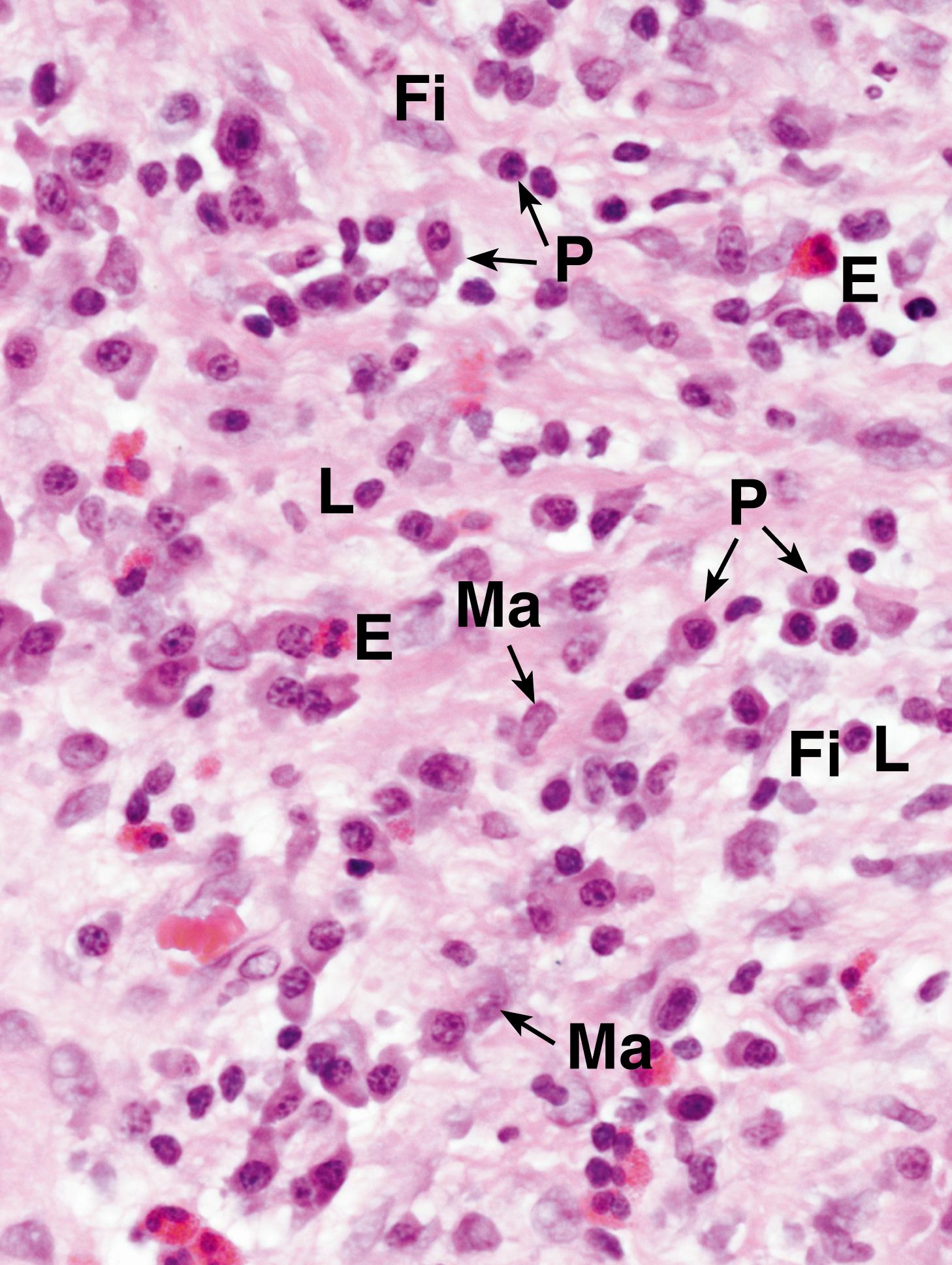
| Factors that impair resolution and healing | Factors that aid resolution and healing |
|---|---|
| Poor nutrition | Administration of appropriate antibiotics |
| Immunosuppression | Surgical removal of foreign material |
| Persisting tissue damage and/or infection | Surgical removal of dead tissue |
| Retained foreign material | General attempts to improve nutrition |
| Sequestered dead tissue | Drugs that specifically modify the inflammatory response |
| Poor blood supply | |
| Deficiency of intrinsic anti-inflammatory factors | |
| Diabetes mellitus and other chronic illnesses | |
| Certain medications, such as corticosteroids | |
| Older age |
E eosinophil F fibrous granulation tissue Fi fibroblast L lymphocyte M muscular wall Ma macrophage P plasma cells Sc scar Sl necrotic slough V vascular granulation tissue
Understanding of the role of H. pylori has revolutionised management of peptic ulceration. In the past, peptic ulcers were treated by surgical procedures, which aimed to reduce acid production, such as partial gastrectomy (to remove the antral source of gastrin) or vagotomy and pyloroplasty (removing the vagal-driven pathway of acid secretion but requiring release of the pylorus since the vagus also controls gastric emptying). Such operations were associated with considerable morbidity. Conventional medical management of peptic ulcer disease employed a range of drugs, from simple alkalis to neutralise excess acid, through various drugs, which interfere with normal physiological control of acid secretion (e.g. adrenergic antagonists and histamine (H2) receptor blockers) to the more recent use of proton pump inhibitors (PPIs) , which effectively block the final common pathway of acid production. Although acid-blocking drugs were usually effective, treatment had to continue for the rest of the patient’s life. Now, treatment usually requires only a short course of eradication therapy, using a combination of two antibiotics with a proton-pump inhibitor (triple therapy) .
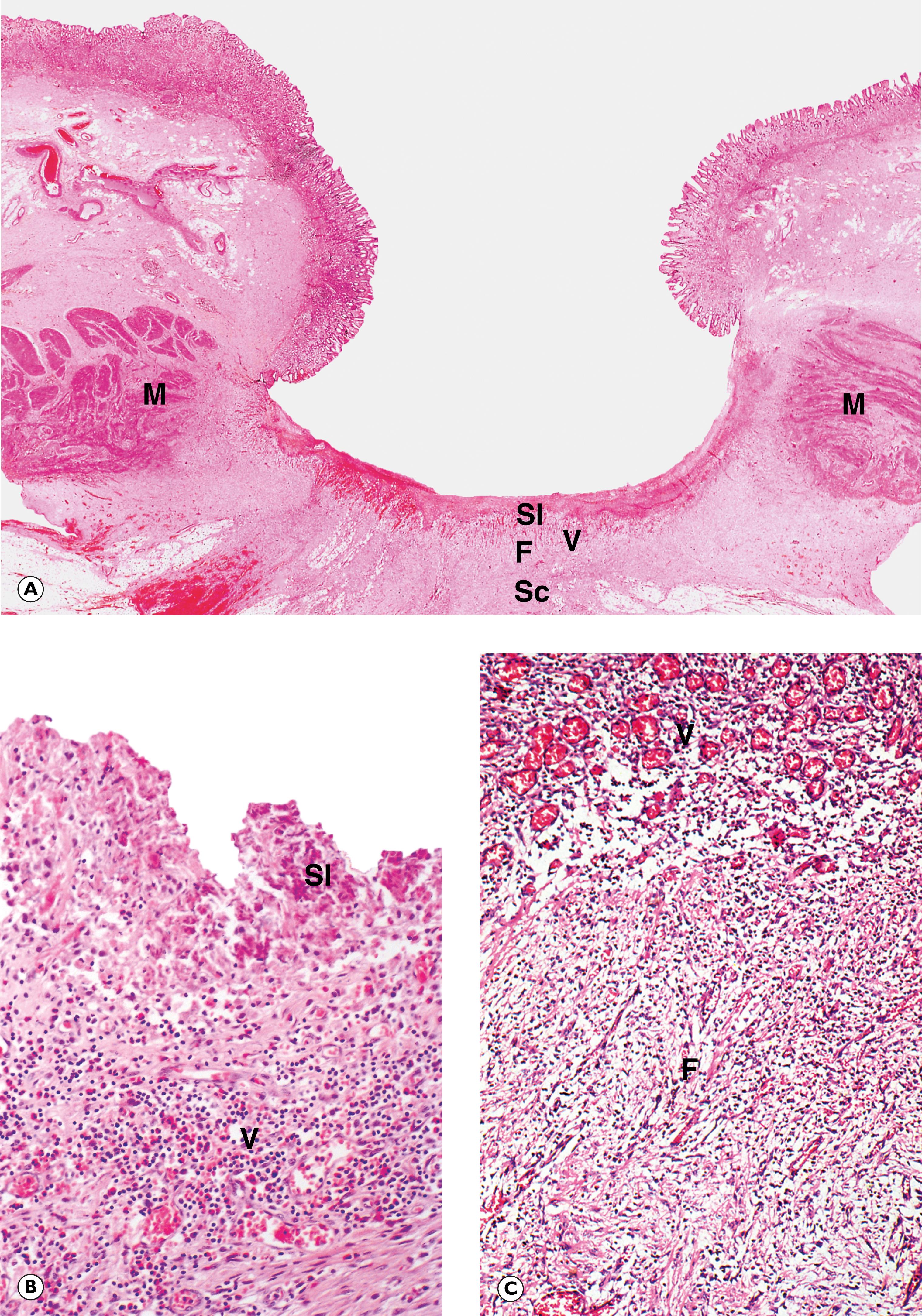
This type of chronic inflammation arises by different mechanisms from non-specific chronic inflammation. Primary chronic inflammation may be either granulomatous or non-granulomatous . A key feature in chronic inflammation is the activation of macrophages, which orchestrate the chronic inflammatory response. Macrophages may become activated by either immune or non-immune mechanisms. Activated macrophages not only become more efficient at phagocytosis and killing of organisms, but also secrete a wide range of factors that control the behaviour of other inflammatory cells (e.g. chemotactic factors, lymphokines) and which induce fibrosis (e.g. fibrogenic cytokines, growth factors). The types of agent that can invoke primary chronic inflammation include:
Immunological
Low-toxicity organisms such as Treponema sp., the causative organism of syphilis and yaws
Infective organisms that grow within cells, e.g. viruses, Mycobacteria
Hypersensitivity reactions such as hypersensitivity pneumonitis
Autoimmune conditions such as systemic lupus erythematosus
Infections by fungi, protozoa and parasites.
Non-immunological
Foreign body reactions
Inert noxious materials such as silica, talc, asbestos or beryllium.
Primary chronic inflammation of the immune type may be either granulomatous or non-granulomatous. A good example of the non-granulomatous immune type is hepatitis B virus infection (HBV) (see Fig. 14.3 ). Virus-infected cells in the liver incite a cell-mediated immune response, producing cytotoxic T lymphocytes, which kill virus-infected hepatocytes. Some individuals mount an effective immune response and clear the infection, whilst in others there is ongoing infiltration of the liver by lymphocytes over months or years, a condition known as chronic active hepatitis . In these people, there is continuing destruction of hepatocytes and fibrosis of the liver, which may eventually cause cirrhosis. As in many examples of chronic inflammation, the tissue damage is due to the inflammatory response rather than the virus itself. In non-immune type primary chronic inflammation, the mechanisms are less clear. However, certain materials such as silica can directly activate macrophages to release mediators that induce an inflammatory reaction and fibrosis.
The defining feature of granulomatous inflammation is the presence of activated epithelioid macrophages and multinucleate giant cells derived from macrophages. Epithelioid macrophages are so named because they bear some resemblance histologically to epithelial (squamous) cells. These cells may form well-circumscribed granulomas (clusters), which are generally surrounded by lymphocytes, macrophages, fibroblasts and varying degrees of fibrosis. Granulomatous primary chronic inflammation may arise by either immune or non-immune mechanisms. The immune type, known as the delayed hypersensitivity response , is epitomised by tuberculosis (see Ch. 5 ). T lymphocytes responding to mycobacterial antigens are activated and divide and mature to produce helper T cells. The helper T cells in turn secrete lymphokines (e.g. interferon (IFN)-γ) that induce the transformation of macrophages into activated epithelioid macrophages and giant cells.
Non-immune granulomatous inflammation is exemplified by the foreign body reaction, for example in response to suture material after a surgical procedure, or when a rose thorn becomes embedded in the skin. Fig. 4.9 is an example of such a reaction and shows plant material (from faeces) embedded in the wall of the bowel in a patient with diverticular disease. In some granulomatous conditions such as Crohn’s disease and sarcoidosis, the mechanism is unclear: infective causes have been postulated but never proven.
The term granuloma needs some clarification. In general, granuloma means a cluster of epithelioid macrophages as opposed to granulation tissue as defined in Ch. 3 . However, in the past, ‘granuloma’ was applied to both a granuloma and granulation tissue and a few examples remain in current terminology where the old usage persists. Examples include an apical granuloma referring to a mass of granulation tissue at the root of a tooth and a pyogenic granuloma (lobular capillary haemangioma), which is a mass of granulation tissue in a healing wound.
A abscess cavity F fibrosis G granulation tissue H hair shaft P pus
Some granulomas develop necrosis in their central area. The classical form is caseous necrosis, which is almost always found in tuberculosis (see Ch. 5 ). Caseous necrosis appears creamy macroscopically (caseous means ‘like cream cheese’). By light microscopy, caseous necrosis is featureless and eosinophilic, containing few cells. Some other granulomatous conditions, such as atypical mycobacterial infection, also develop central necrosis but the necrosis is suppurative with plentiful neutrophils, often called suppurating or necrotising granulomas . Some common types of granulomatous inflammation are characterised by their lack of necrosis; examples of this type are Crohn’s disease and sarcoidosis .
Chronic fibrosis, whatever the cause, can be a cause of great morbidity and sometimes mortality. Fibrosis and scar formation are normal parts of tissue healing after significant damage. However, in some individuals, in association with certain insults, there is a tendency to develop excess fibrosis such that the fibrous tissue impairs organ function. Idiopathic pulmonary fibrosis as described above is one example; others include keloid scars and intra-abdominal adhesions that may arise and persist after abdominal surgery.
The underlying immune basis of a group of unusual fibrosing disorders (including retroperitoneal fibrosis, Riedel’s thyroiditis, chronic sclerosing sialadenitis and autoimmune pancreatitis) has recently been recognised. These are now described using the term IgG4 related disease. All of these disorders are linked by the tendency to form tumour-like lesions with numerous lymphocytes and plasma cells, many of them IgG4 positive plasma cells, prominent storiform fibrosis (with the cells arranged in a cartwheel/woven pattern) and obliterative phlebitis (inflammation obliterating small veins). Some patients also have a raised serum IgG4 level.
Other instances of excessive fibrosis result from known causes (e.g. infections such as tuberculosis (see Ch. 5 ) and fibrosis of a transplanted kidney in chronic rejection.
A enlarged alveolar space E epithelioid macrophage F fibrous tissue I interstitium L lymphocytes P type 2 pneumocyte hyperplasia
A asteroid body F foreign body giant cells G non-caseating granuloma L lipogranuloma M epithelioid macrophages P plant material S Schaumann body
L lipogranulomas
| Type of chronic inflammation | Histological features | Some examples | Figure |
|---|---|---|---|
| Non-specific: follows on from unresolved acute inflammation | Mixed inflammatory response with lymphocytes, plasma cells, eosinophils, neutrophils. Characterised by mixture of acute inflammation, chronic inflammation and attempts at healing (granulation tissue, fibrosis) |
Chronic peptic ulcer Bronchiectasis ( E-Fig. 4.3 G ) Pilonidal sinus Ulcerative colitis |
4.2 4.3 4.4 13.18 |
| Specific chronic inflammation (non-granulomatous) | The inflammatory infiltrate consists predominantly of lymphocytes, plasma cells and macrophages Sometimes there are variable numbers of eosinophils and mast cells |
Viral infections Idiopathic pulmonary fibrosis ( E-Fig. 4.6 G ) Cellular rejection of transplanted kidney Lichen planus |
5.12–5.14 4.5 4.6 21.7 |
| Specific chronic inflammation (granulomatous) | This type of inflammation is characterised by the formation of granulomas: aggregates of epithelioid macrophages, with or without giant cells | Sarcoidosis Foreign body giant cell reaction Tuberculosis Leprosy Crohn’s disease |
4.8 4.9 5.3–5.7 5.9 13.16 |
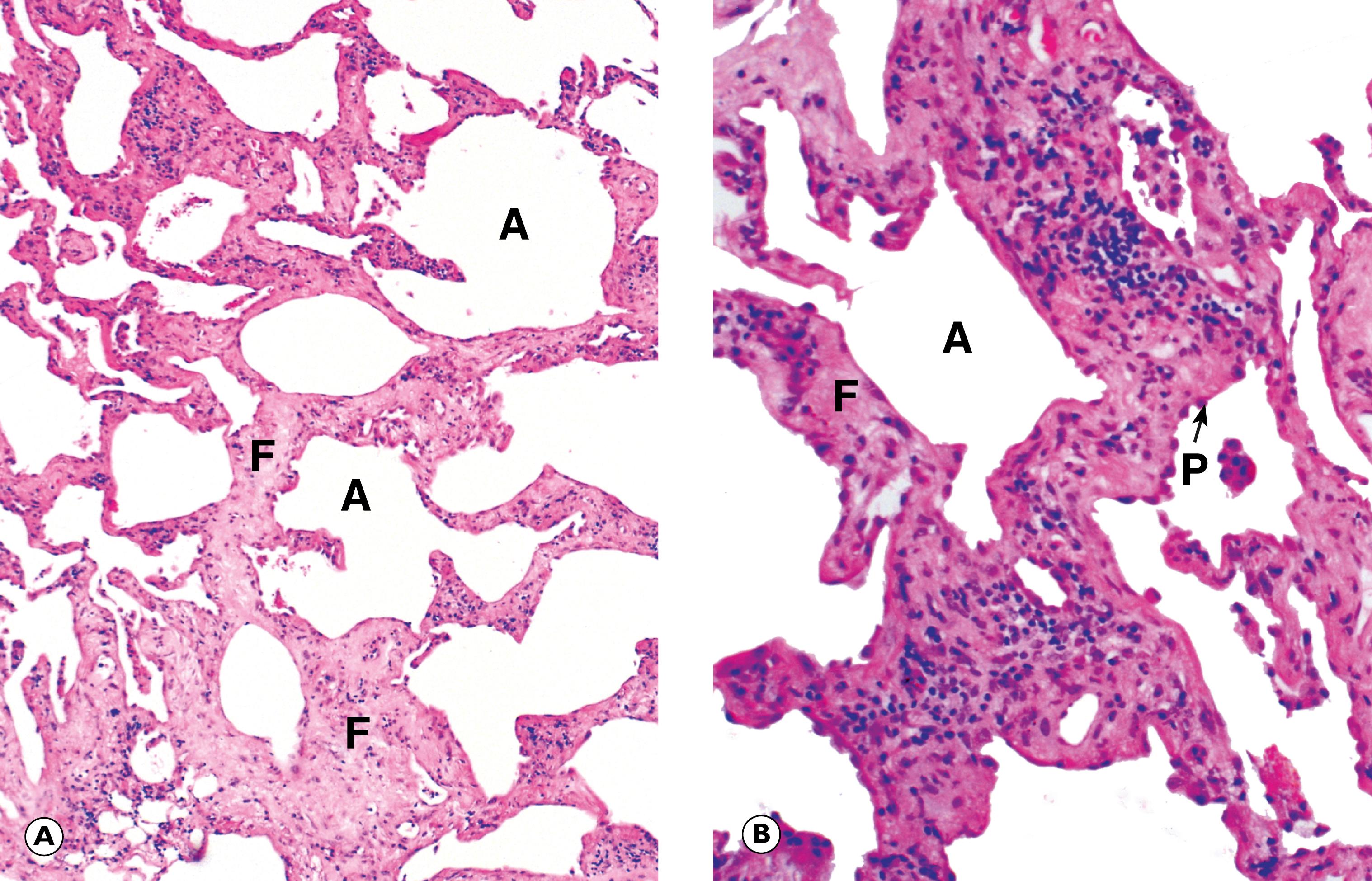
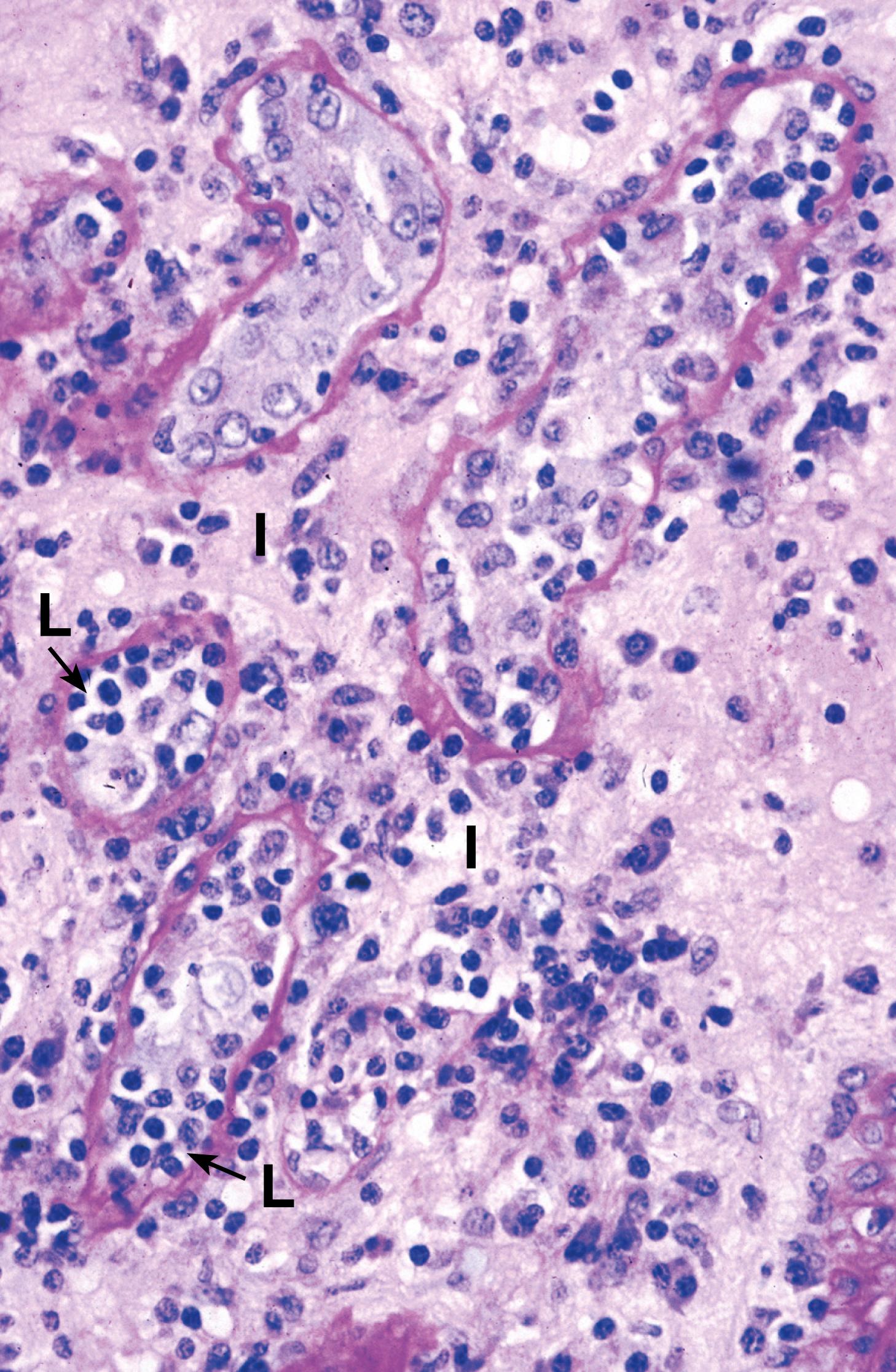

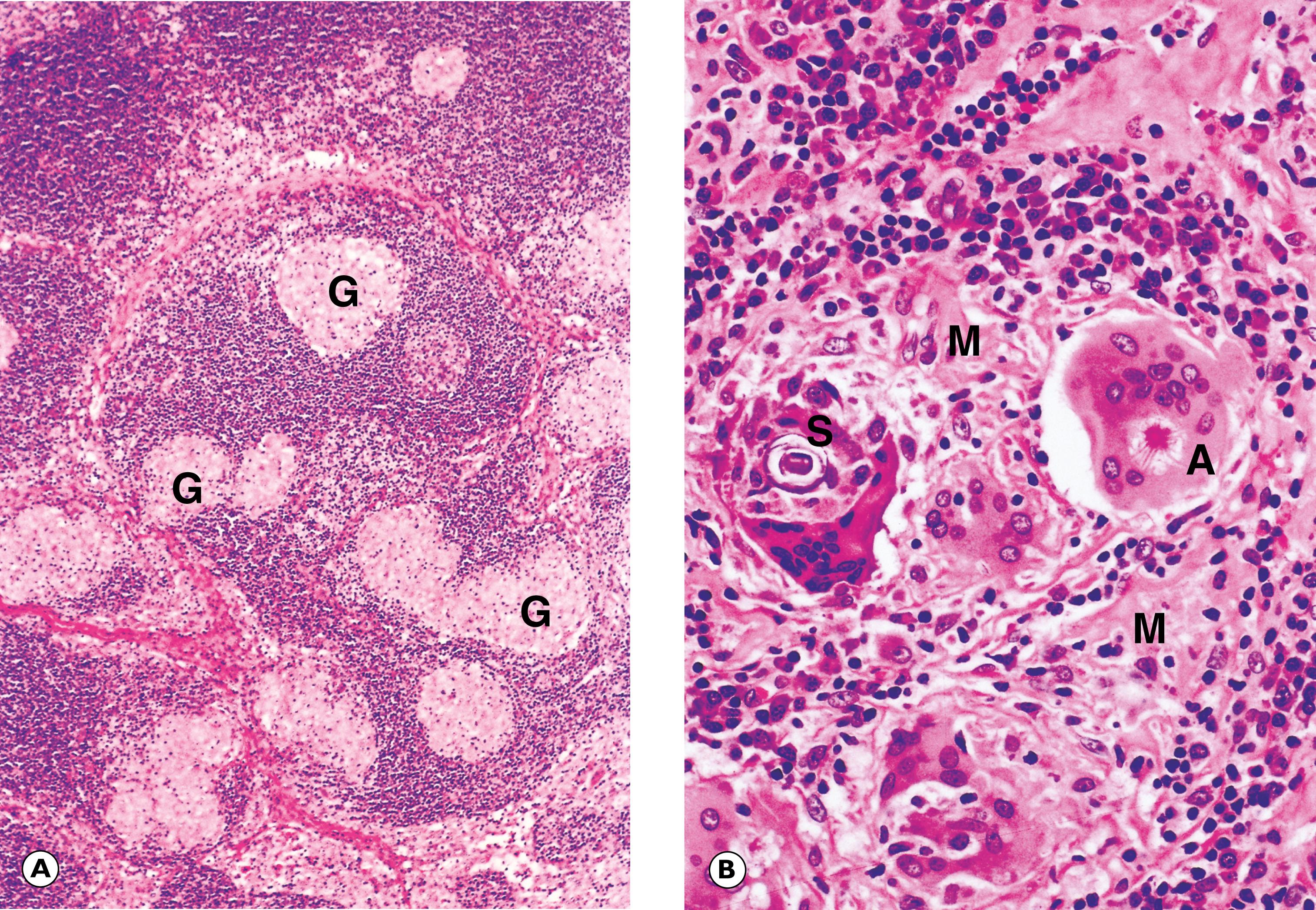

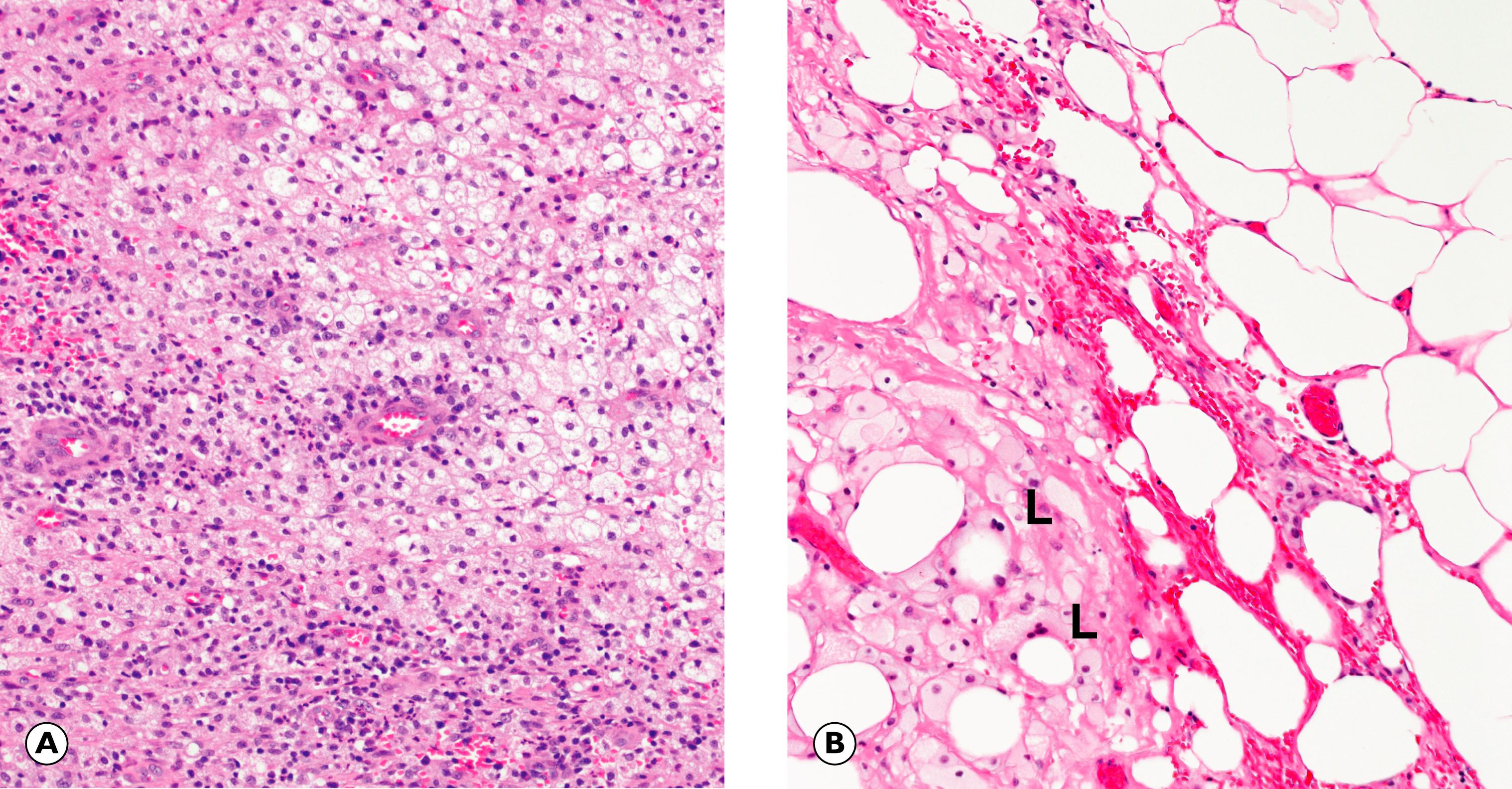
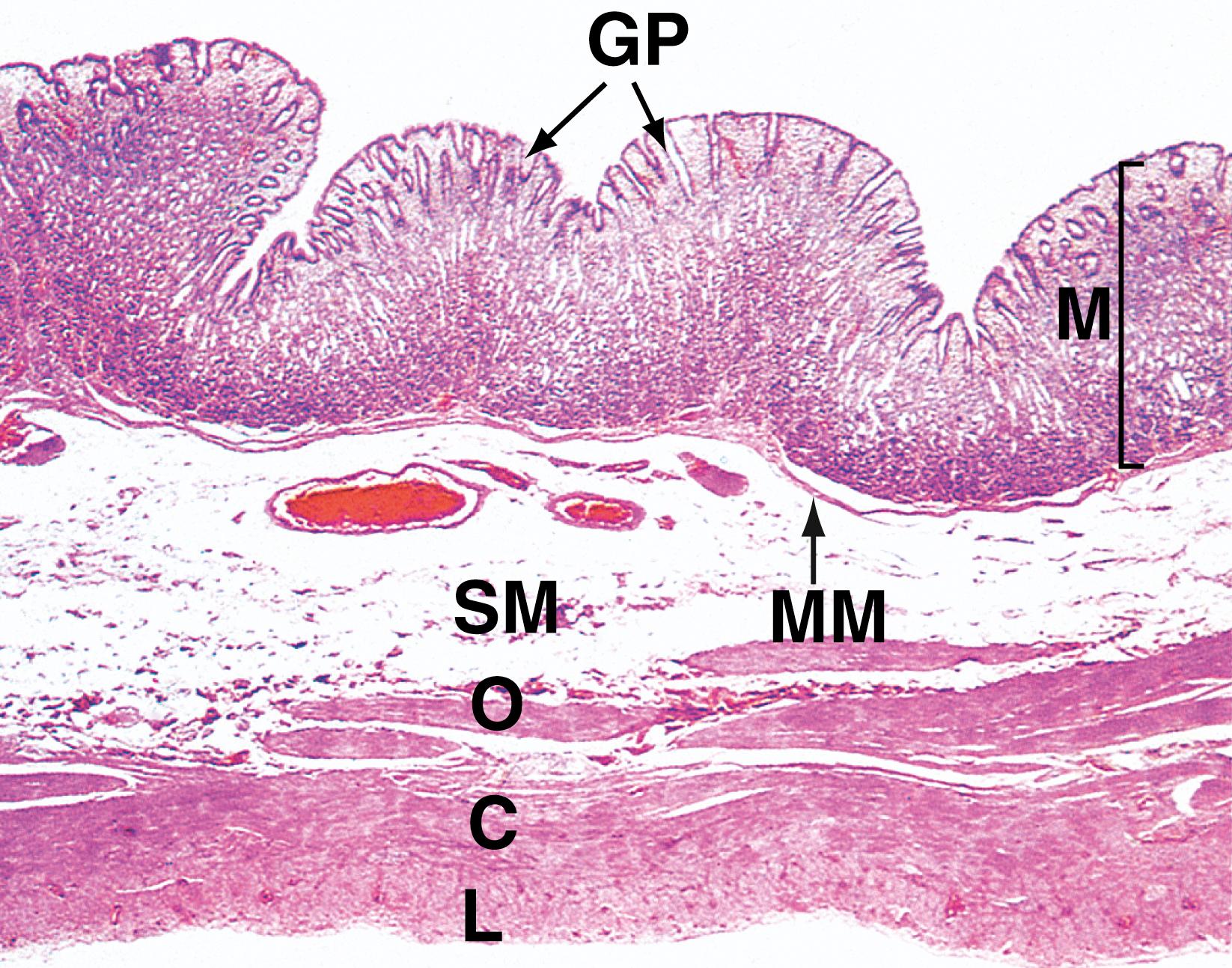
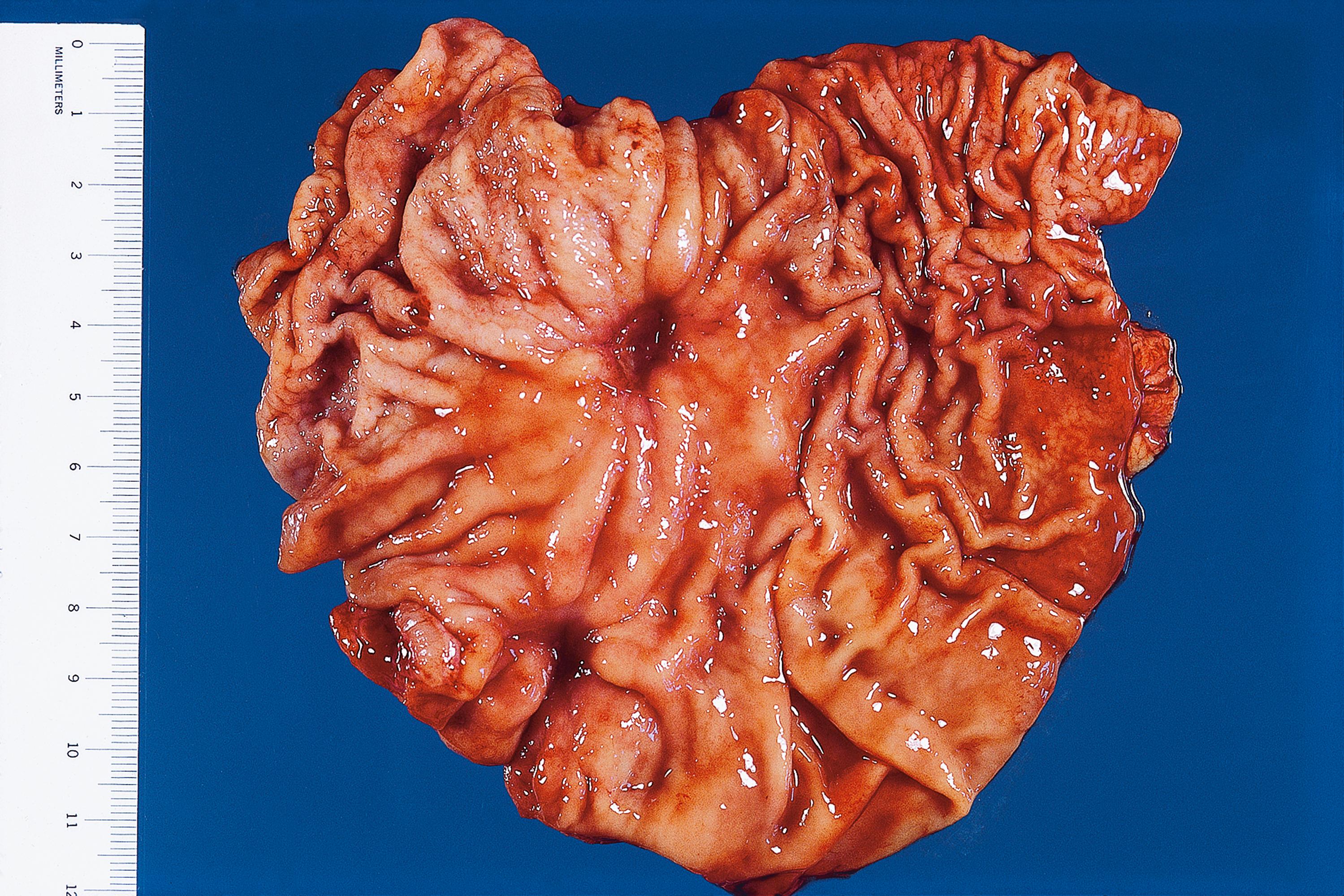
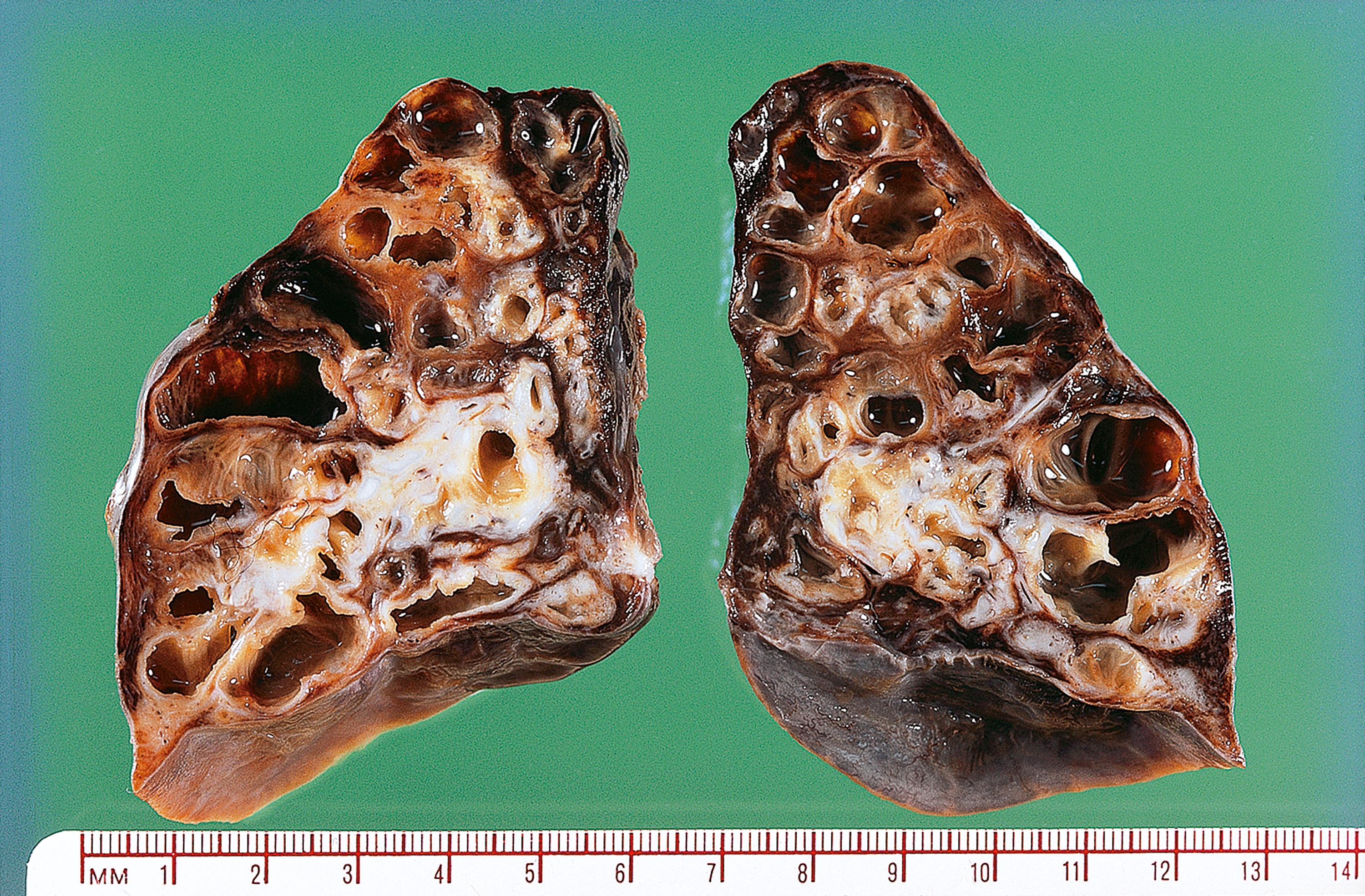
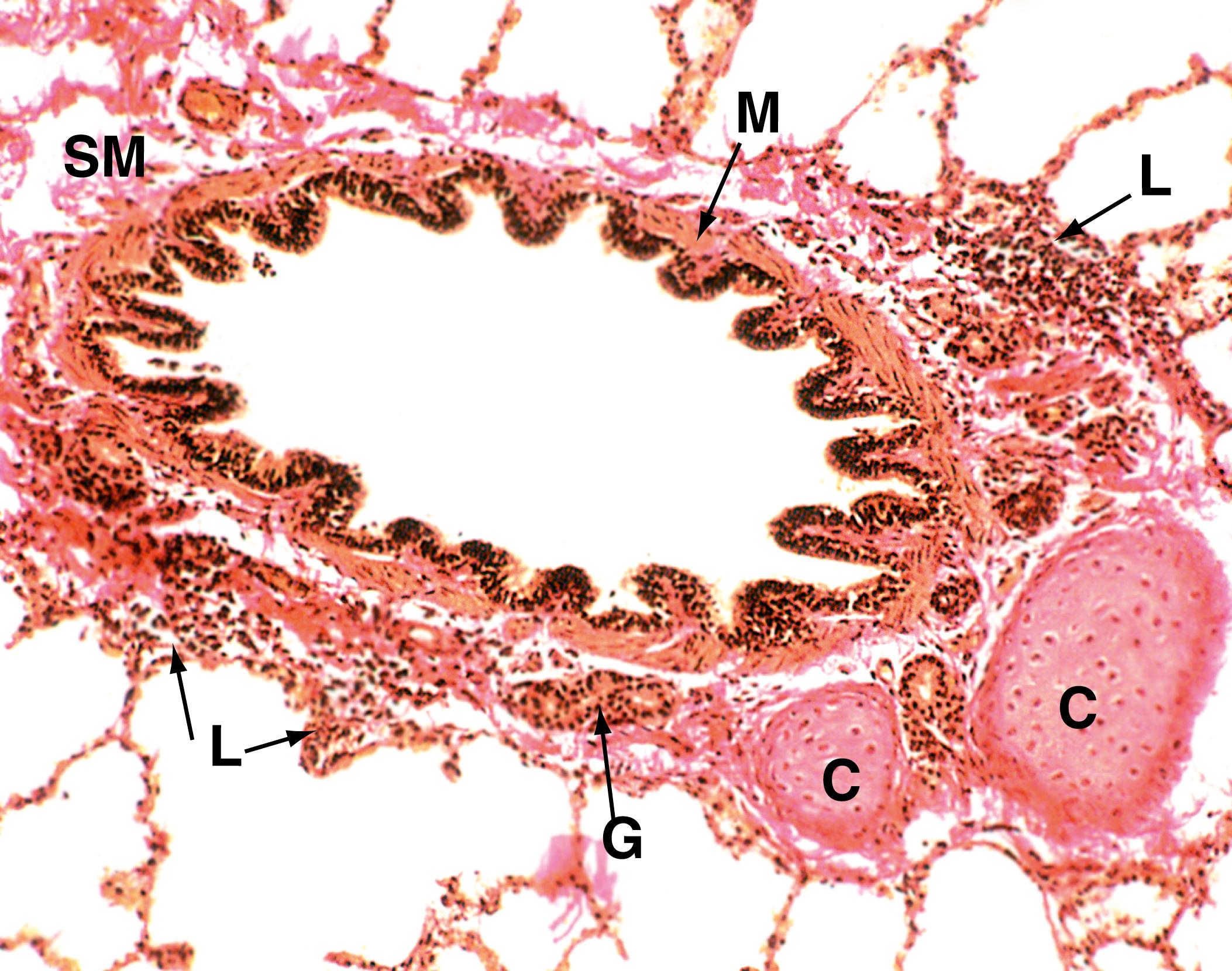
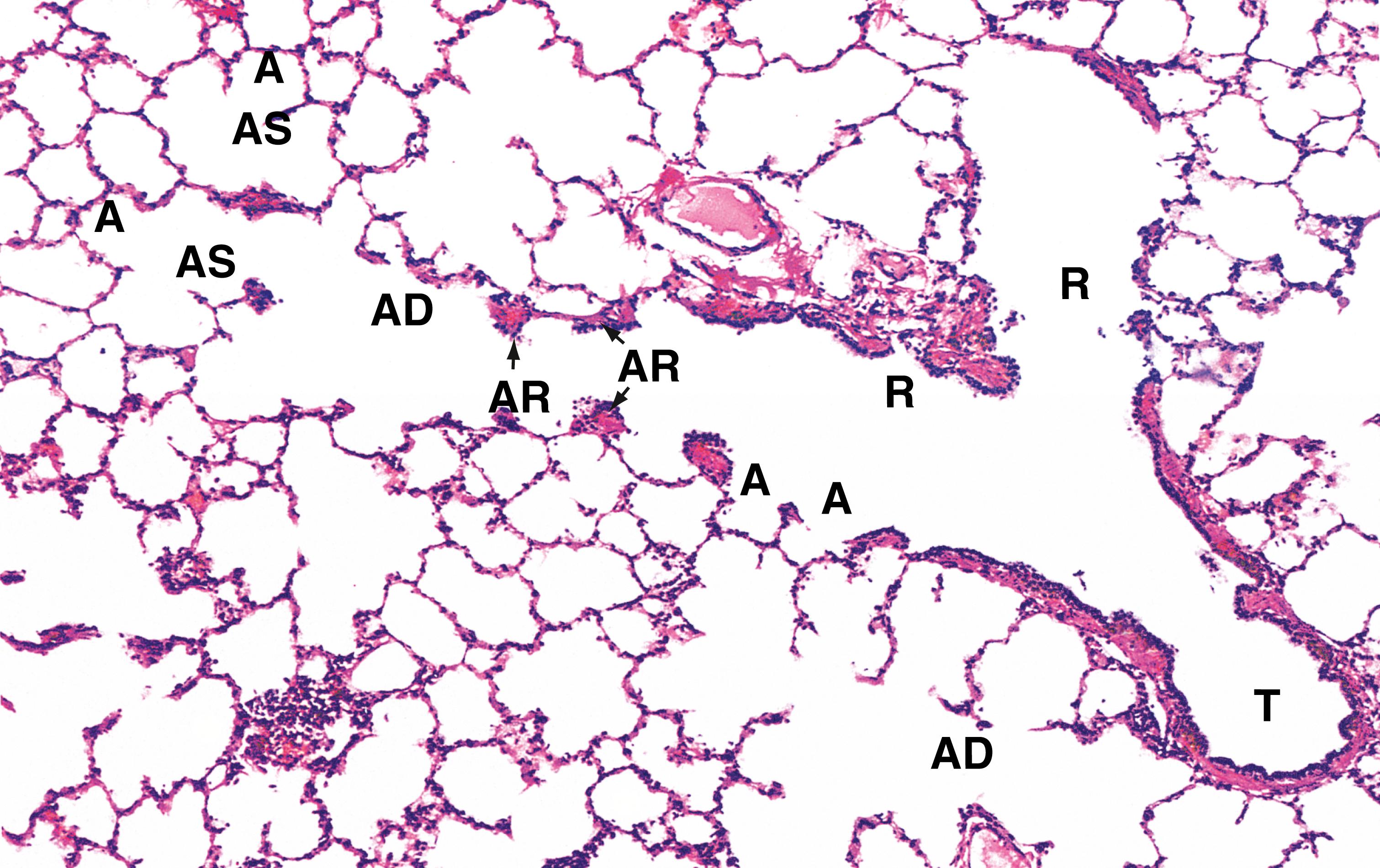
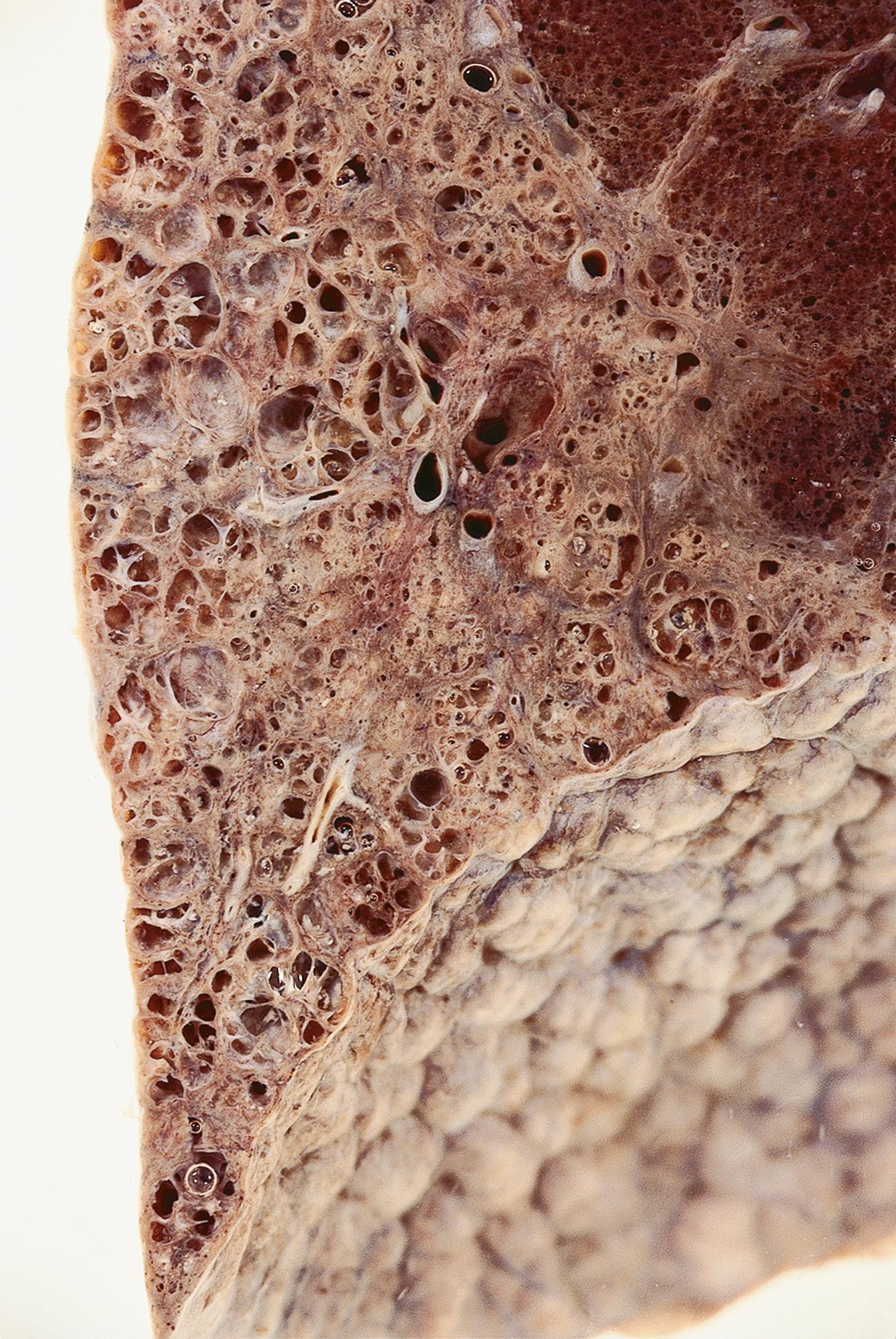
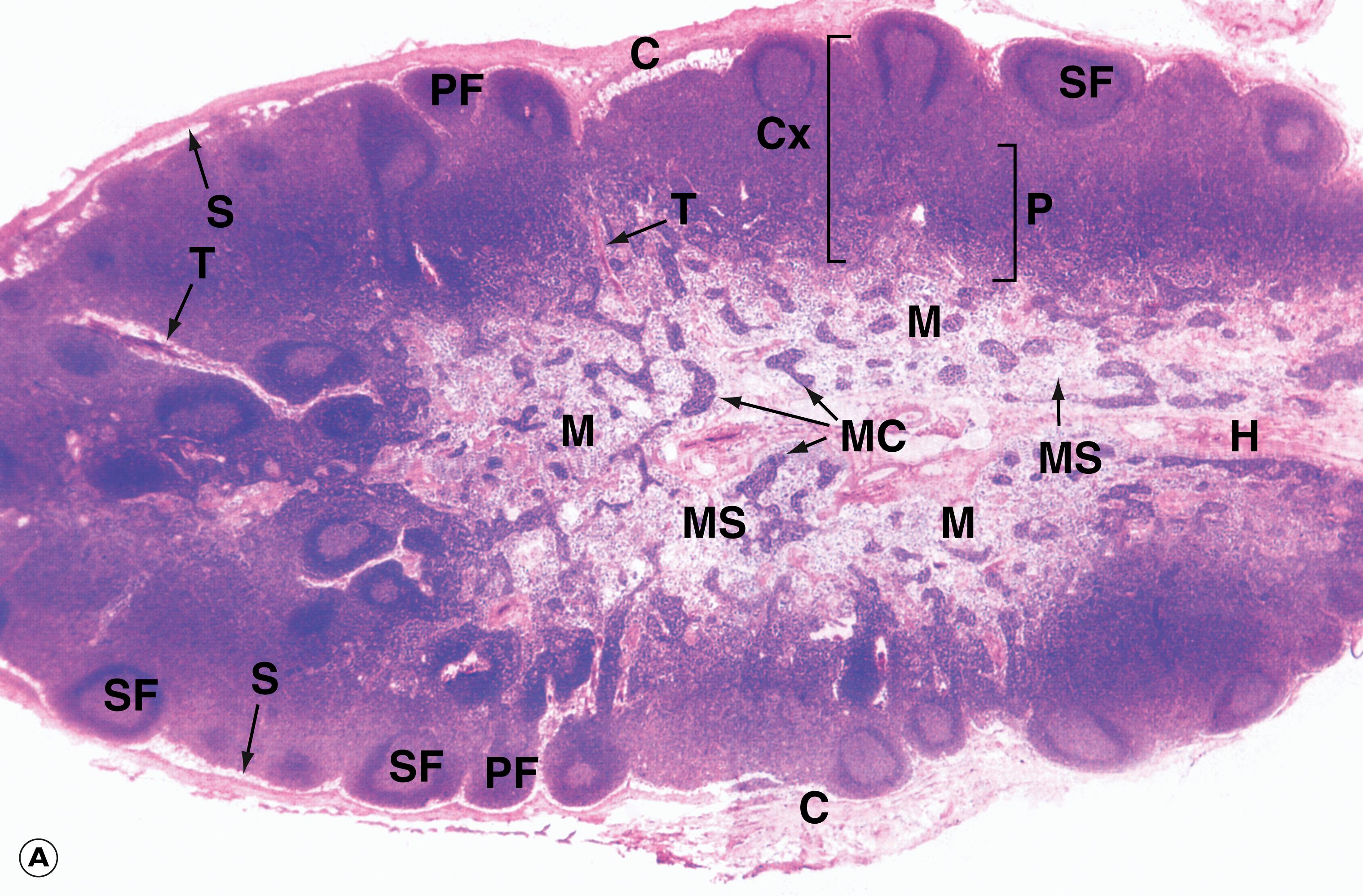
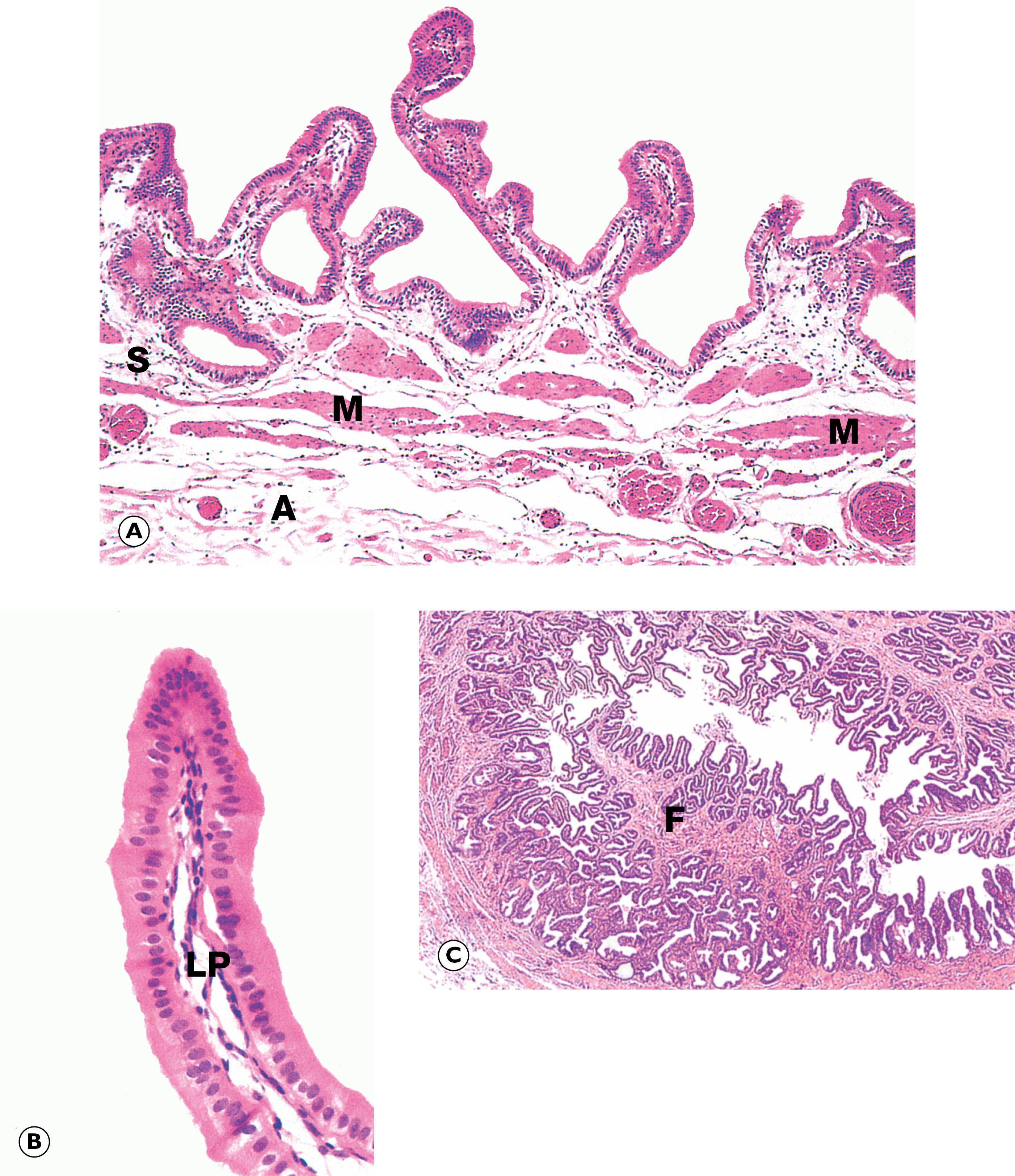
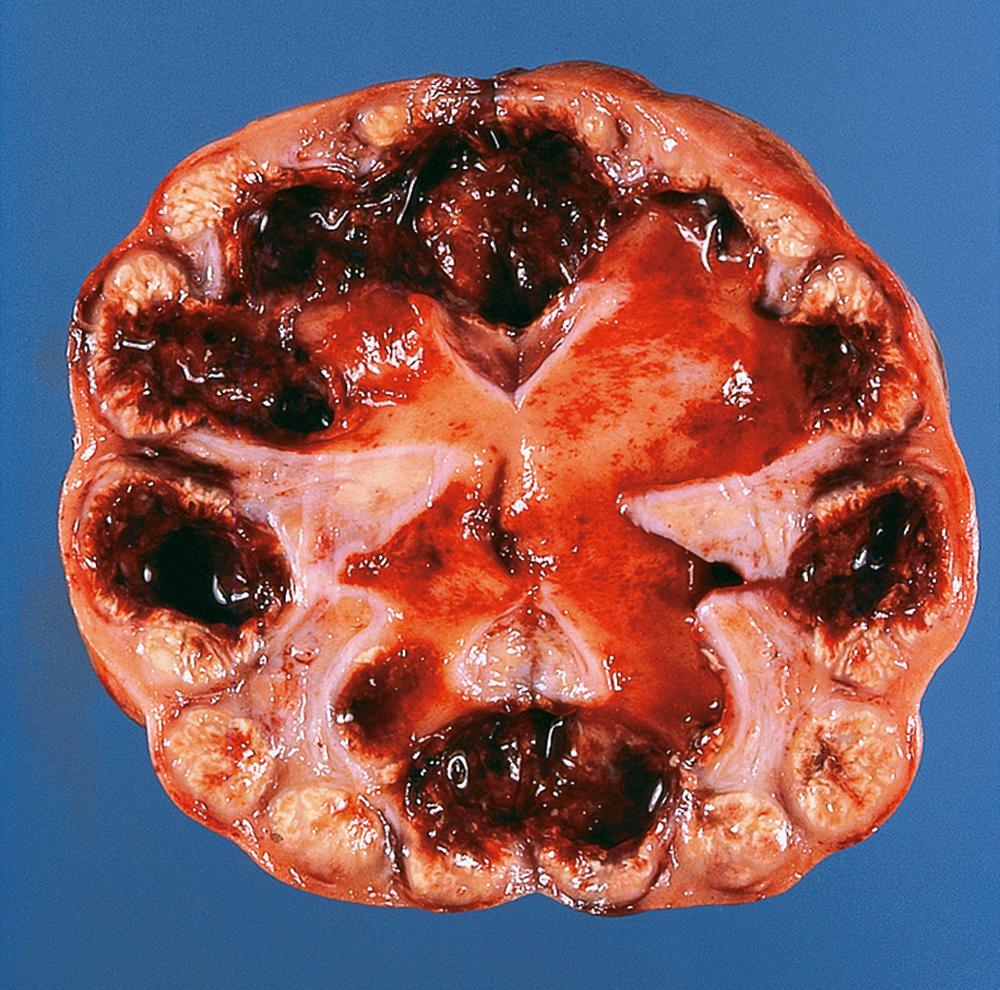
A 72-year-old patient with non-insulin dependent diabetes and peripheral vascular disease falls at home and suffers a complicated fracture of his right wrist. Which of the following factors will NOT delay fracture healing in this patient? (Select one answer)
Corticosteroid treatment
High serum glucose level
Fragments of dead bone at the fracture site
Surgery to align the bones and remove dead tissue
Infection
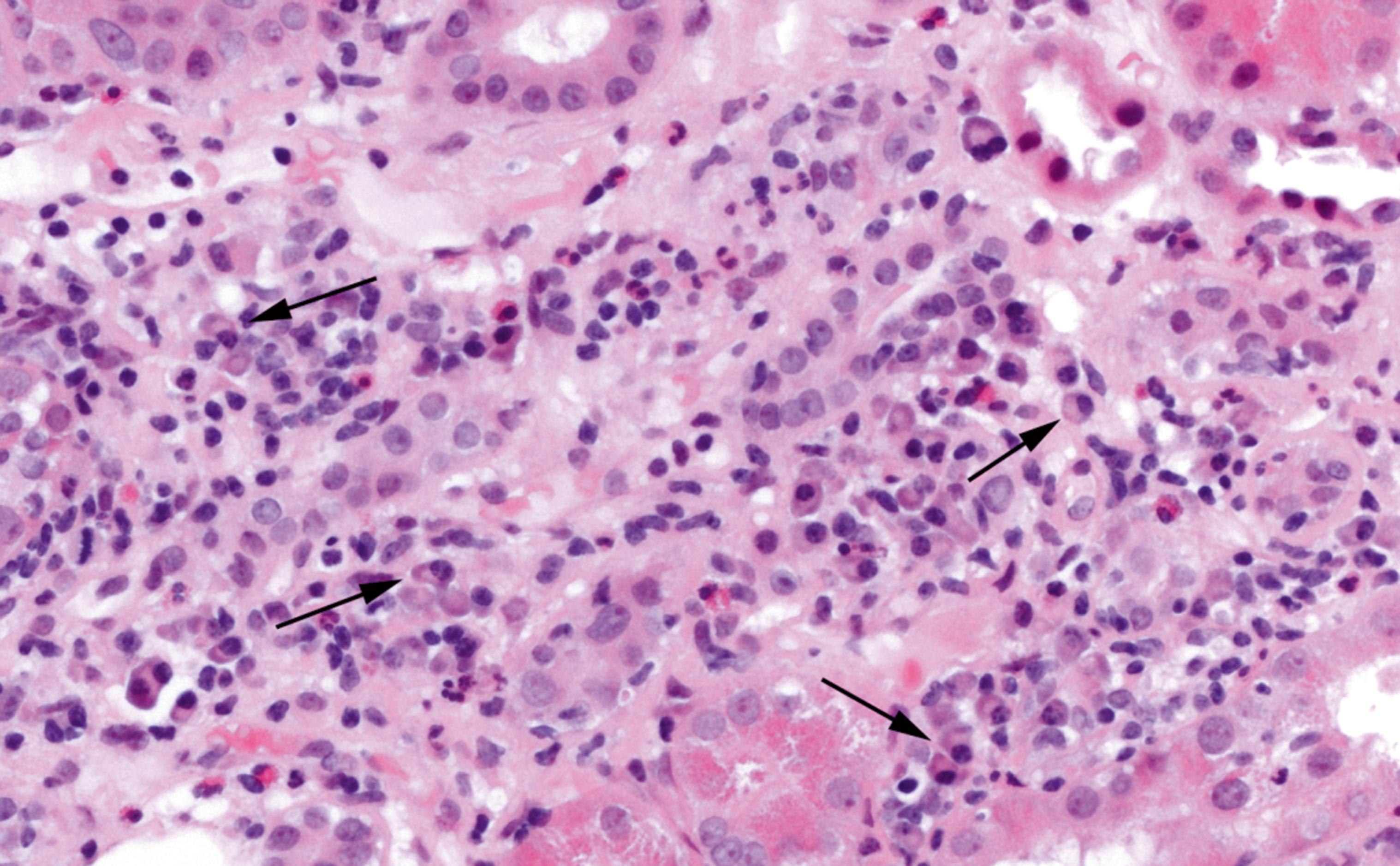
This image shows chronic inflammation in the kidney. Which cells are indicated by the arrows? (Select one answer)
Eosinophils
Macrophages
Neutrophils
Epithelial cells
Plasma cells
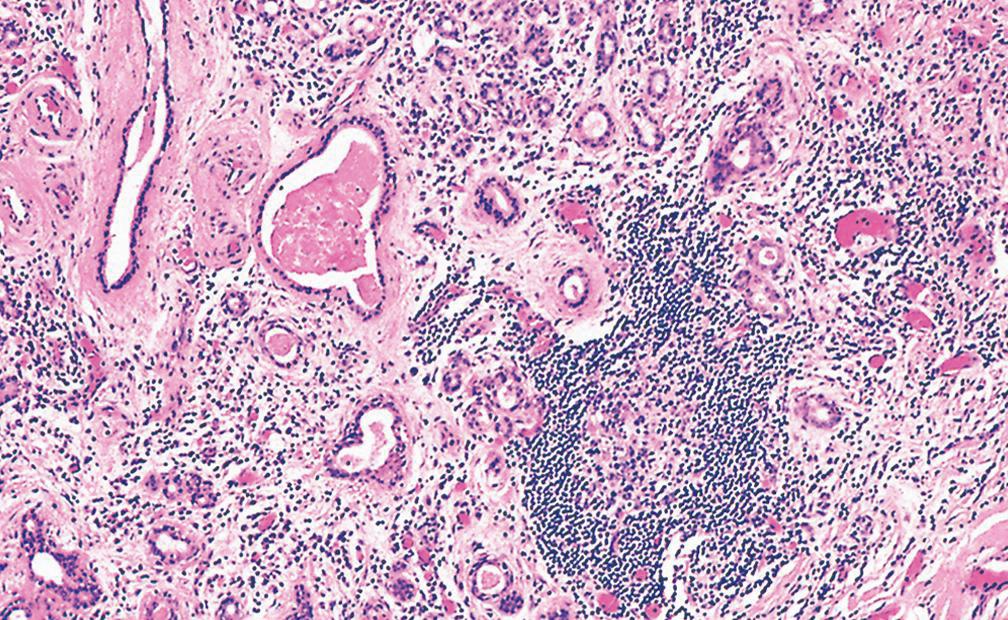
This image shows a salivary gland with typical features of chronic sialadenitis. Which of the following features is NOT illustrated? (Select one answer)
Become a Clinical Tree membership for Full access and enjoy Unlimited articles
If you are a member. Log in here